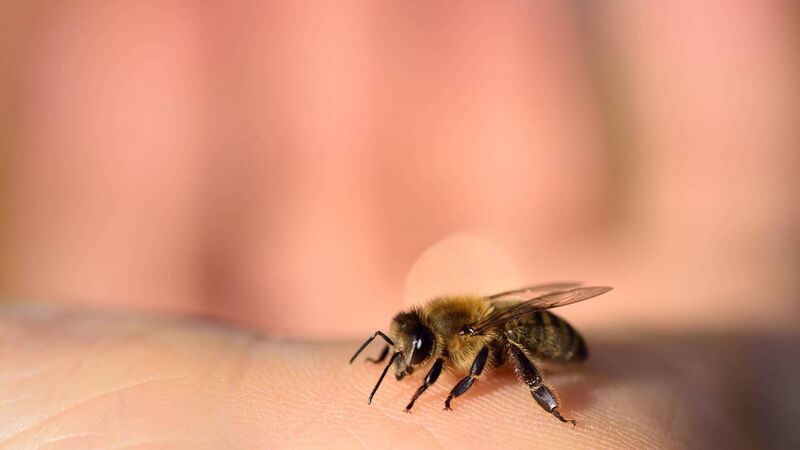Life Hack: What to do if you are stung by a bee and when to seek medical help

A bee dies after it stings and the stinger detaches from its body upon impact.
It is helpful to know for certain you were stung by a bee. When bees sting their stinger remains embedded in the injury as it rips from their body, killing the bee. Wasps, meanwhile, are not killed when stinging and can sting a person multiple times. As soon as you realise you have received a bee sting, make sure you remove the stinger carefully from your wound as soon as you can as the stinger can continue to release venom while it is embedded in your skin, The sooner you remove it, the less pain you will be in. The easiest way to remove the stinger is to use a credit card or similar to scrape the stinger out of our skin.
Like any injury, it is important to keep the site as clean as you can. Wash the sting with soap and water once the stinger is gone from your skin. You want to avoid developing infection so this is an important step. For the same reason, avoid scratching the sting, even if it is itchy — this can also introduce bacteria and cause infection.
Most bee stings will cause the area around the impact site to swell up. Placing something cold on the swelling can help to reduce it. This can take the form of an ice pack or a cold compress. Don’t apply an ice pack directly to the skin, instead wrap it first in a cloth as it can ‘burn’ the skin if there is no barrier.
Bee stings are often painful as well as inconvenient. You can tackle pain with over-the-counter pain relief from your local pharmacy. You can also get oral antihistamines to reduce itching and swelling from the sting.
While bee stings are a common ailment that can be treated at home, there is a chance the person stung might need medical help in extreme cases. Contact a doctor if you or someone else is stung multiple times or if signs of a serious reaction or allergy develop. Swelling and redness is expected but signs of anaphylaxis include hives, a swollen tongue or throat, difficulty breathing, coughing, sudden paleness or suddenly looking red-faced, nausea/vomiting, stomach cramps, diarrhoea, dizziness, and loss of consciousness.
For minor stings that can be treated at home, there are some homemade remedies that could ease your suffering, You can apply honey, ideally manuka honey, to lower inflammation and aid healing, according to a 2021 research paper published in Open Life Sciences. Alternatively, bicarbonate of soda can be mixed into a paste with water and applied to the sting to neutralise the venom and relieve itching and swelling.

Celebrating 25 years of health and wellbeing












